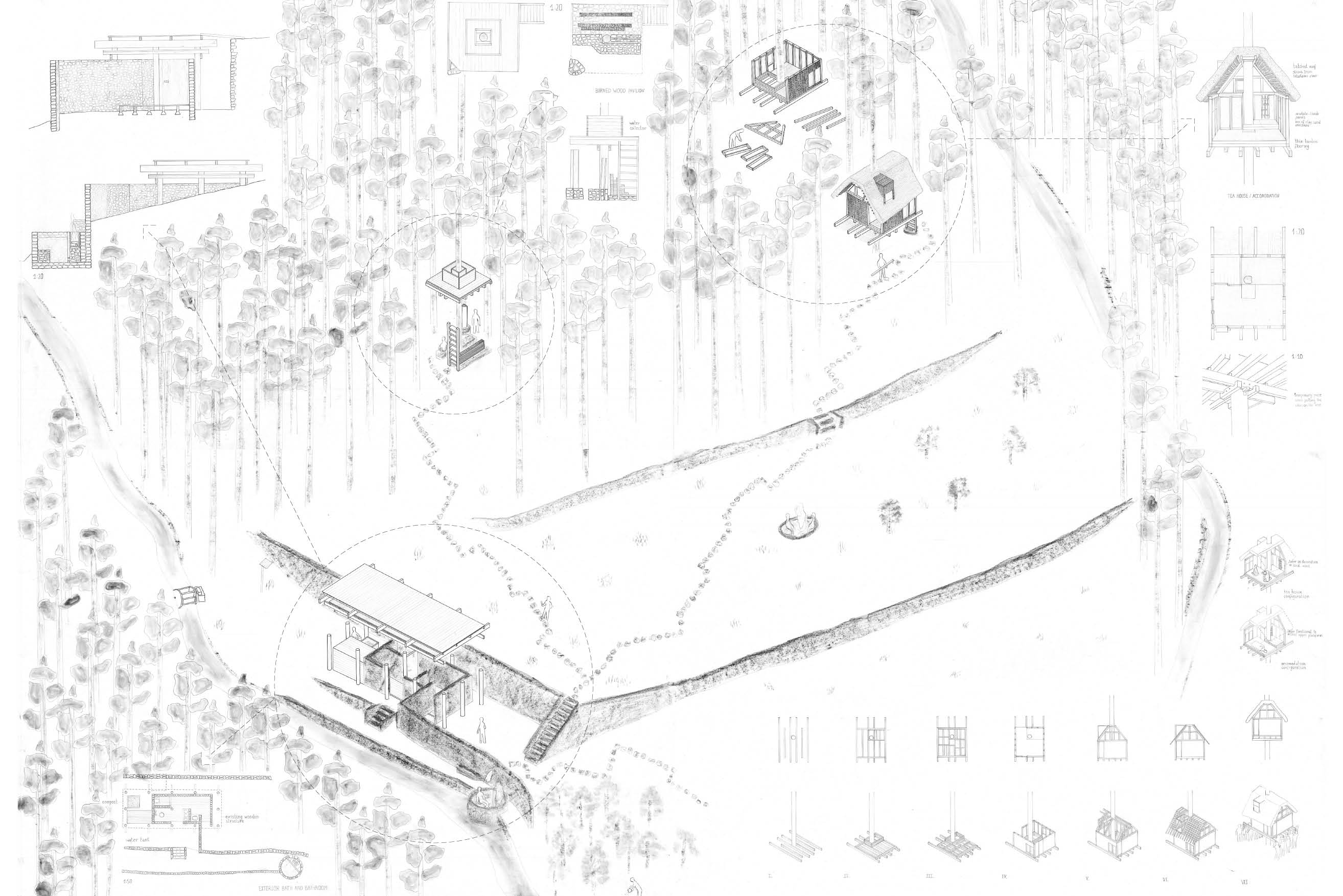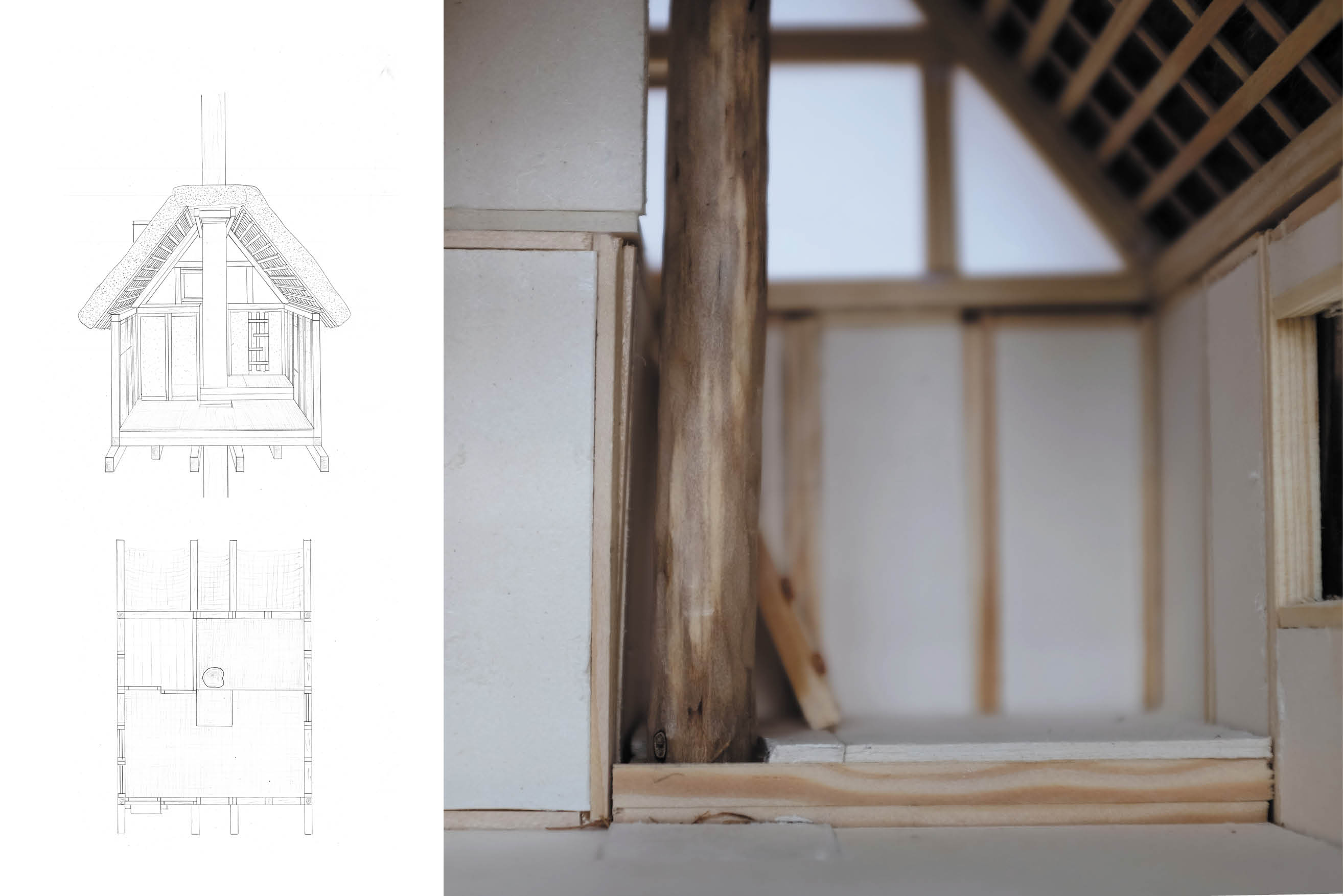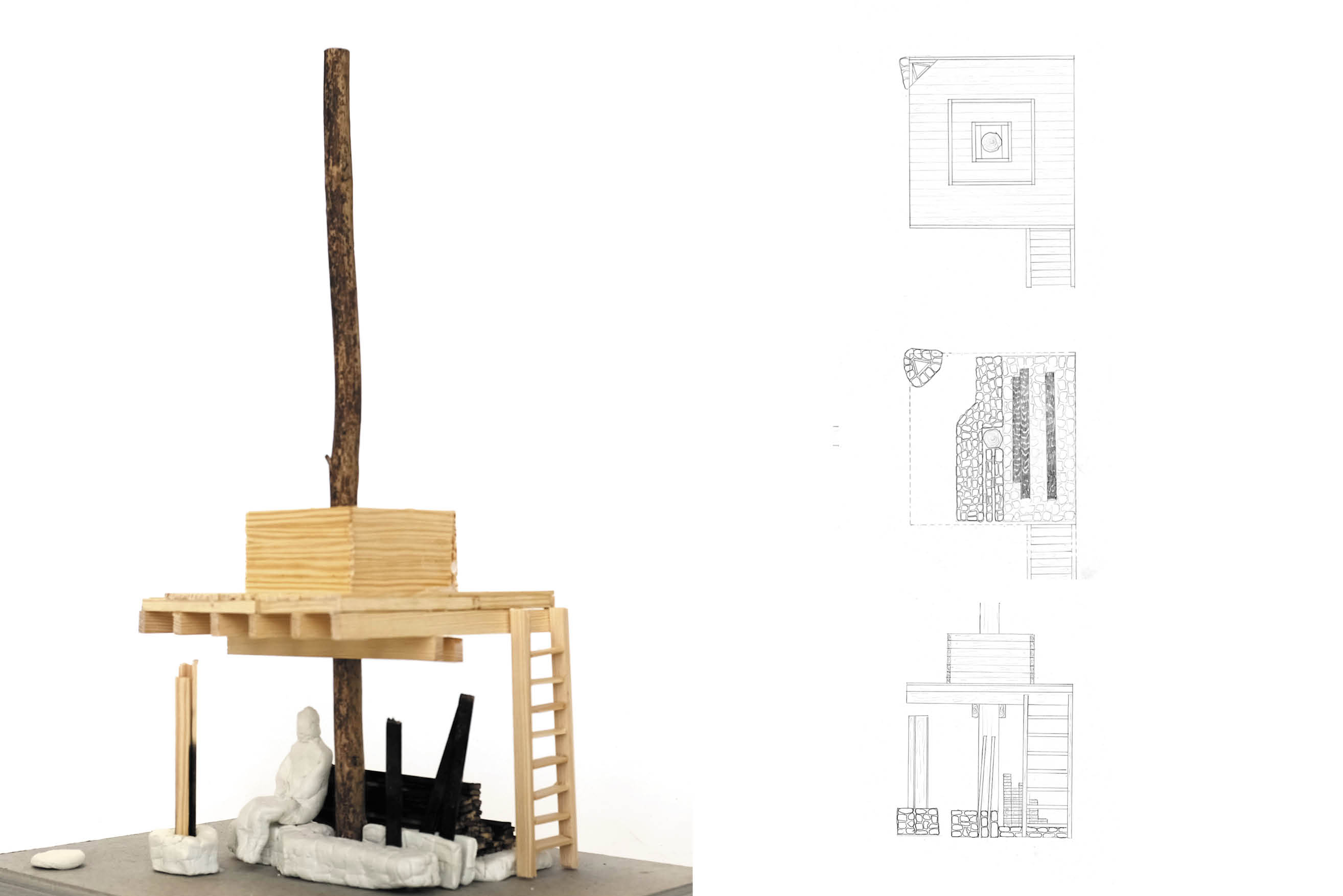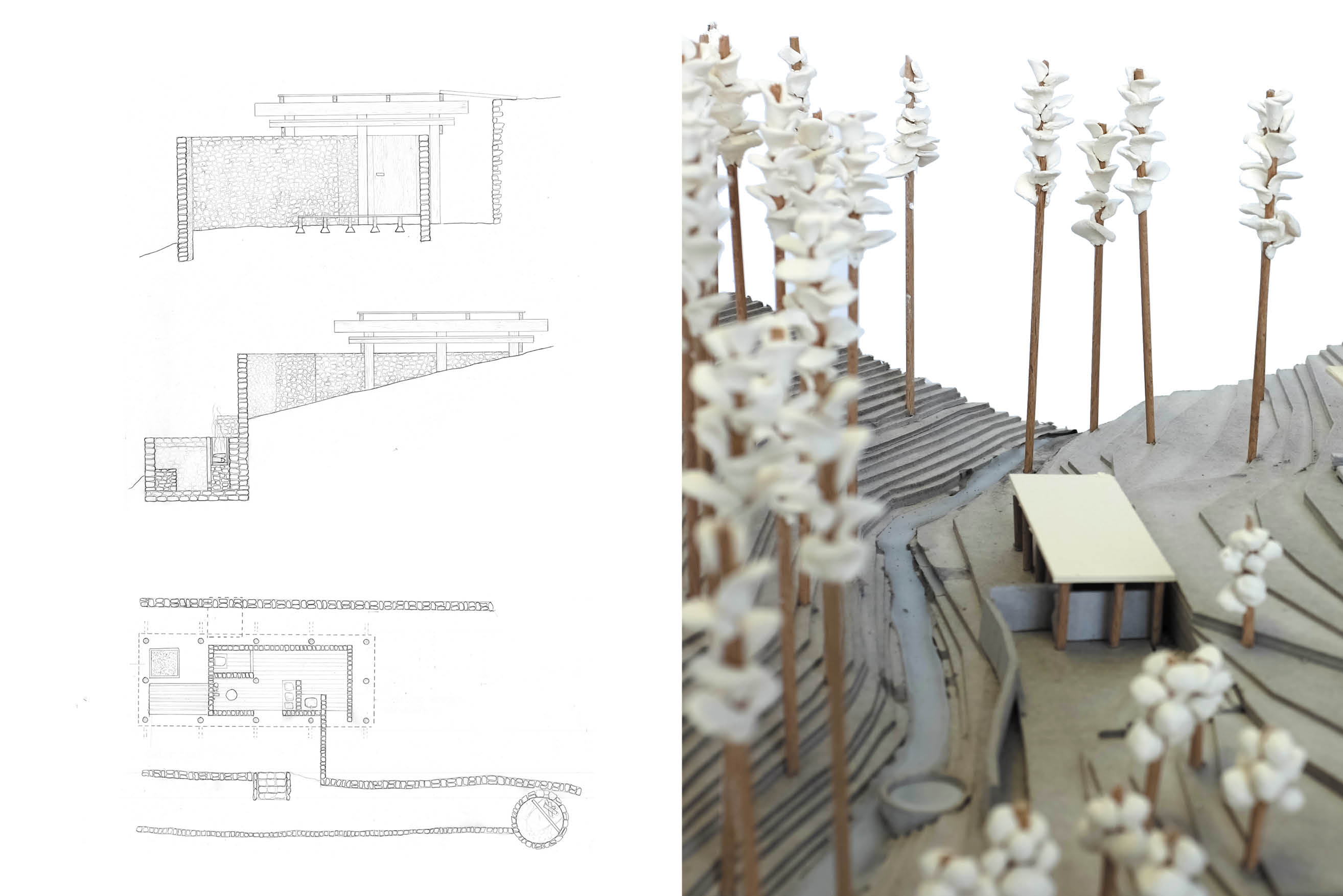Hamaguri-Hama is a small fisherman’s village in the north of Japan. The project intends to bring life back to the village that suffered terrible losses after the tsunami in 2011. It is composed of 3 elements; an exterior bath, a pavilion dedicated to the art of the burned wood, and cabins in the trees that are used as accommodations and tea houses.
The project addresses the natural element of the forest with two main materials: stone and wood. The exterior bath and its facilities generate new walls going under the existing wooden structure and new retaining walls maintaining the river.
In the pavilion, the stone is less present; the wood takes over.
This pavilion is designed to simplify the traditional technic of the burned wood. The visitor can sit on the stone bench contemplating the wood-burning or the forest.
The last element, the cabin, is mainly in wood and constituted by prefabricated wooden panels for the walls and is assembled on-site around a chosen tree.





